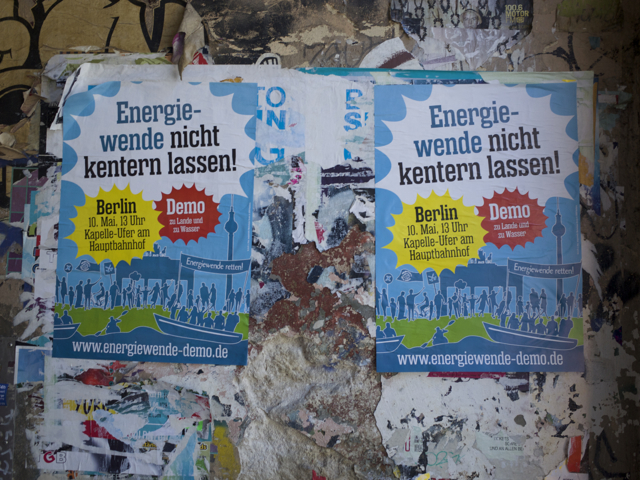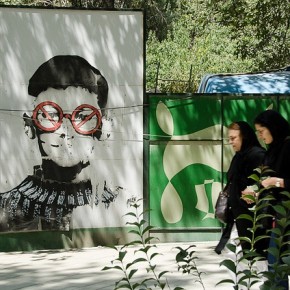If the goal is to decisively tackle climate change, then Germany’s Energiewende is a disaster. This wouldn’t be the case if Europe’s environmentalists weren’t so deeply opposed to using nuclear power. The much touted “energy transition” has been unable to decrease national reliance on fossil fuels. Despite the hype, solar and wind power are simply not ready to succeed our current energy-producing infrastructure. Part of this is the German government’s fault. After all, far more electricity would be generated if communities were able to become energy-independent by themselves, rather than the current arrangement that favors larger corporations.
It isn’t just the money, though. There are also core limitations in the technology that will only be overcome in time. Whether we like it or not, solar and wind simply cannot provide consistent electricity. This is an unpleasant reality that many environmentalists have been slow to admit. The image of wind turbines powering Denmark, and solar cells fueling Germany, is very romantic. It allows us to imagine a world in which we do not have to suffer through the coming century of climate strife. But what happens if the air is still? What happens on a cloudy day? What if there hasn’t been enough electricity stored until these sources can work again?
Let me be clear: I am not saying we should be pessimistic about solar and wind generated power. After all, they have improved dramatically over the past several decades, and still hold the best possible hope for a green future. Ideally, a continent-wide renewable energy grid would work in conjunction with new storage technologies to meet all of Europe’s needs, a model which could be exported to other areas of the world. In the long-term, a global network could generate and transport renewable energy for everyone. There is no reason that Pakistani floodplains couldn’t work together with sunlight in the Empty Quarter, and wind turbines in the Netherlands,.
The problem is that we need to think practically. Right now, these energy sources aren’t sufficient to meet our needs by themselves. This is a problem because we need to dramatically slash our carbon emissions as soon as possible. We have a choice there: nuclear, or non-nuclear fossil fuels, as complementary, albeit unwanted energy sources. So far, the unofficial ban on nuclear energy has meant even more reliance on the latter. This is exactly what has happened in Germany, where Angela Merkel has announced that nearly twice the number of earmarked fossil fuel plants will have to be built in order to support Germany through Energiewende.
President Obama used similar rhetoric about hydraulic fracking in his 2014 State of the Union address, praising the earthquake-causing practice that lights people’s tap water on fire as “a bridge fuel that can power our economy with less of the carbon pollution that causes climate change.” This is despite Cornell University researchers concluding that shale gas is actually dirtier than coal. There are a lot of reasons why this is happening, like geopolitical needs of decreasing reliance on Russian gas and Middle Eastern oil. However, we have to accept our own role as environmentalists. If we cut off nuclear energy as a potential bridge fuel, then coal and shale gas are obviously going to fill the void.
I am not enthusiastic about nuclear power. Disasters like that which occurred at Fukushima are huge warnings, just as Chernobyl and Three Mile Island were before. At the same time, though, they have been overblown. The World Health Organization released a report on Fukushima that admitted a 70% increase in risk for thyroid cancer in those exposed (an impact which is far lower than is widely believed) but not much else. Even at its worse, nuclear power is still more palatable than the disasters caused by pipeline ruptures, and spectacular events like the Gulf of Mexico oil spill four years ago.
The science of nuclear disasters, in comparison to blowouts like these, do not point towards avoiding the energy source altogether. Rather, they highlight that these reactors were out of date, and governed by safety regulations that were deliberately avoided. This is not inevitable. Leftists are often the first to note that this is exactly the type of thing that happens when energy sources aim for profitability above all else. An alternative approach of federalizing control over the reactors, and placing them in the hands of non-corporate bodies, should be proposed.
This may be a fantasy, though, given that most environmentalist groups in Europe are dead against nuclear power. That’s all well and good, but without intelligent politics, our disgust simply ends up playing into the hands of fossil fuel elites. The Christian Democrat Union is just one of many agents that are able to fake their care for the environment by shutting down reactors, while continuing to pollute it with sources that are far worse. It is a tragedy that as environmentalists, we are allowing this to happen. It is crucial that we think pragmatically, and are realistic about the best possible pathway to a green future. Time is running out.
Photograph courtesy of Joel Schalit





